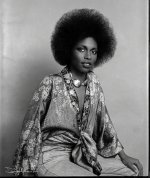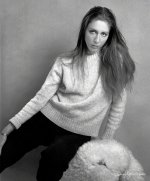- Joined
- Jan 1, 2009
- Messages
- 15,505
- Reaction score
- 3,866
- Points
- 113
- Location
- Winchester, VA
- Your Mac's Specs
- MBP 16" 2023 (M3 Pro), iPhone 15 Pro, plus ATVs, AWatch, MacMinis (multiple)
The slides go into a holder that is strictly manual, at least for my system. You advance the slide to the scanning position, scan one, adjust if you need to, then after getting a good scan, slide the tray manually to the next slide. There is a detent to let you know you have it in the right place. Once I got the hang of it, I was doing 4-5 in a minute, including typing in a name for the file and unloading/reloading the tray that held four slides or the tray that held a strip of 4 negatives. If that's too slow, I don't have a suggestion. I could not find a flatbed with high enough resolution when I was looking for a scanner. Maybe they are better now. I still don't know how a flatbed can be faster or better because on a flatbed you would have to somehow align the slide or negatives to be properly aligned, or do an adjustment later with an editor. As for automatic feed, I liked that I could see the scanned and reversed color image right away so that I could tell if the scan parameters worked for that particular image. Also I could enter a meaningful name for the image right away so I didn't have to rename them later. I guess it's all in how you work. If you want to just stack up a pile of slides in some automatic feeder, don't care about the image tweaks, don't care about names, and just want them scanned as fast as possible, the Plustek is not for you. It's designed for a home user just trying to get all of those vacation slides from years gone by into an electronic format without dropping a ton of money or time.
You can go crazy trying to over-analyze. I ended up with the Plustek because of the scan resolution and ability to do both slides and negatives. It worked well for me. Beyond that, I don't have any other advice for you. Sorry.
I will say that I tend to ignore a lot of the negatives at Amazon, unless they overwhelm the positives and are focused on something important to me. A lot of the negative reviews come from people with a financial interest in a different product trying to downgrade the overall rating. I looked at the page you posted of negatives reviews from UK and at least two were about the software and how it worked. They didn't like it and apparently had not bothered to try to learn how it worked. That's just lazy and no reason to downgrade a product. Scanning slides and negatives, particularly negatives, takes some finesse, and the software does it well, if you take the time to learn how it works and how you can adjust an image after scanning.
You can go crazy trying to over-analyze. I ended up with the Plustek because of the scan resolution and ability to do both slides and negatives. It worked well for me. Beyond that, I don't have any other advice for you. Sorry.
I will say that I tend to ignore a lot of the negatives at Amazon, unless they overwhelm the positives and are focused on something important to me. A lot of the negative reviews come from people with a financial interest in a different product trying to downgrade the overall rating. I looked at the page you posted of negatives reviews from UK and at least two were about the software and how it worked. They didn't like it and apparently had not bothered to try to learn how it worked. That's just lazy and no reason to downgrade a product. Scanning slides and negatives, particularly negatives, takes some finesse, and the software does it well, if you take the time to learn how it works and how you can adjust an image after scanning.






